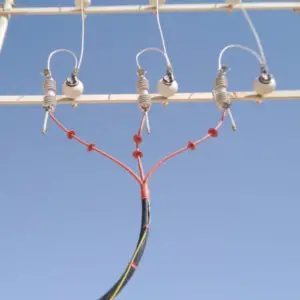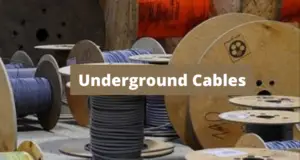If you’re in the process of designing or renovating a building’s electrical system, you may have come across the terms “cable tray” and “cable ladder”.
These two components are commonly used to support and protect cables, but they have some key differences that can affect their suitability for your project.
In this article, we’ll compare cable trays and cable ladders in detail, so you can make an informed decision for your electrical system.
Table of Contents
What is a Cable Tray?
A cable tray is a structural component that is used to support and protect electrical cables. It’s essentially a tray made of metal or plastic, with raised edges to keep the cables in place.
Cable trays are available in different shapes and sizes, depending on the application. They can be straight, curved, or angled, and can be suspended from the ceiling or mounted on the wall.
Cable trays are used in a variety of settings, from industrial plants to office buildings. They are preferred in situations where there are many cables to be managed, as they provide a convenient and flexible way to route and support the cables.
Cable trays are also suitable for environments where there may be exposure to moisture, chemicals, or extreme temperatures. Read my comprehensive article Do you really need a cable tray.
What is a Cable Ladder?
A cable ladder is another type of support system for electrical cables. It consists of a series of metal or plastic rungs, connected by side rails to form a ladder-like structure.
The cables are laid on the rungs and secured with cable ties or clamps. Cable ladders are available in different widths and depths, and can be customized to fit the specific requirements of the project.
Cable ladders are commonly used in industrial and commercial settings, where there is a need to support heavy-duty cables.
They are especially useful in applications where the cables need to be routed horizontally over long distances.
Cable ladders are also preferred in situations where there is a risk of damage to the cables from environmental factors or physical hazards.
Comparison Table: Cable Tray vs Cable Ladder
To help you understand the differences between cable trays and cable ladders, we’ve put together a comparison table:
| Criteria | Cable Tray | Cable Ladder |
|---|---|---|
| Structure | Tray made of metal or plastic with raised edges | Ladder-like structure with rungs and side rails |
| Cable Support | Cables sit inside the tray and are held in place | Cables lay on top of the rungs and are secured |
| Installation | Easy to install, can be suspended or mounted on walls | Requires more space for installation, usually mounted |
| Flexibility | Flexible, can be customized to fit various shapes | Less flexible, difficult to modify once installed |
| Capacity | Limited by the size of the tray | Can support heavier cables over longer distances |
| Maintenance | Easy to access and clean | Difficult to access, requires disassembly |
| Cost | Lower cost per foot compared to cable ladder | Higher cost per foot compared to cable tray |
As you can see, both cable trays and cable ladders have their strengths and weaknesses, and their suitability will depend on the specific requirements of your project.
Conclusion
Choosing between cable trays and cable ladders requires careful consideration of your project’s requirements.
While cable trays are more flexible and easier to install and maintain, cable ladders can support heavier cables over longer distances.
Ultimately, your decision should be based on factors such as cable capacity, space availability, and budget.
Read my article about cable tray failure causes and preventions.
Install my Free Android App on Google Play:
Electrical Cables Most Common Tables
And, my Electrical Calculations App “”
Discover more great content by subscribing to My channel
Looking to stay ahead of the game in the world of electrical engineering? Subscribe to my YouTube channel and gain access to exclusive content you won’t find anywhere else!
The staff I recommend
(Amazon Affiliate Links to products I believe are high quality):
- Economy 120 Volt/60Hz AC Power Source – Step-Down Voltage & Frequency Converters 1800W
- UNI-T Digital Multimeter Tester UT139C
- 50-Amp Extension Cord for RV “100ft”
- Voltage Stabilizer 110/220v
- Hair Dryer “best selling“
- TOSHIBA EM131A5C-BS Countertop Microwave Ovens
Disclaimer: This contains affiliate links to Amazon products. I may earn a commission for purchases made through these links.



